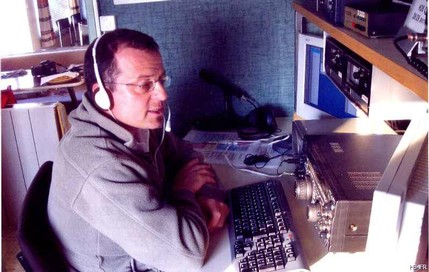What is the "Amateur Radio" Service ?
What Amateur Radio is not: Citizens' band Radio!
Very often, the Amateur Radio Service is confused with Citizens Band Radio (CB radio). The latter was designed to exchange personal information and opinions. CB means "Citizens Band" and is open to all without exams. However, frequency bands and transmit powers are very limited
The Amateur Radio Service
In contrast, amateur radio operators have passed an examination leading to an authorization to operate on the “Amateur Radio Bands”. They all have the ability to communicate across the country, around the globe, and even with astronauts on space missions:
- in frequency bands for radio amateurs, between 135.7 kHz and 250 GHz in the range of myria-, hecto-, deca-, metric, decimetric waves into the millimeter wave zones
- with their own call sign or that of a club
- using traditional modes of operation such as Morse radiotelegraphy, radiotelephony, radio-teletype (RTTY); Modern digital transmission processes such as Packet Radio, PSK 31, AMTOR, PACTOR, JT65, FT8 and many more
- using image and video transmission modes such as FAX (Facsimile), SSTV (Slow Scan Television), ATV (Amateur-TV, amateur television), SATV (narrowband ATV), DATV (ATV digital) and DRM (Digital Radio Mondiale)
- Apart from the direct links the amateurs also know contacts via a relay station, echolink, satellites as for example OSCAR (Orbital Satellite Carrying Amateur Radio), the International Space Station (ISS), EME (Earth-Moon-Earth) and Meteorscatter.

Berti, HB9SLO
at the HB4FR Clubstation
 Radio amateurs transmit personal communications as well as technical informations relating to transmission and reception tests.
Radio amateurs transmit personal communications as well as technical informations relating to transmission and reception tests.The users are individuals or associations of Amateur Radio operators. To obtain a license, radio amateurs must hold a valid certificate of ability on the basis of examinations. In Switzerland, these examinations are organized by the OFCOM.
In the sense of the law, the amateur radio service is a transmission service through which radio amateurs communicate with each other. The law defines the activity of radio amateurs as "radiocommunication services whose purpose is:
- intercommunication
- individual instruction
- technical and scientific experiments and studies of intercommunication
- support for relief actions in precarious situations and disasters.
This definition shows that the amateur radio service is not only a pure leisure activity, but that amateur radio activities can be deduced from duties towards society.
Thus, amateur radio operators are required to provide assistance in cases of precariousness and disaster.
The amateur radio network extends globally, as there are amateur radio operators in all the countries of the world.
Amateur Radio operators can communicate only between them. An Amateur Radio communication is called "QSO". Amateur Radio operators mutually confirm each first frequency band and mode of transmission QSO with a QSL card throughout the world.
How to become a HAM operator ? The ways and possibilities to get an amateur radio license in Switzerland
The expression "HAM" Of course it's not a ham on the bone ! Discover what the term " HAM " means in the Amateur Radio language…

